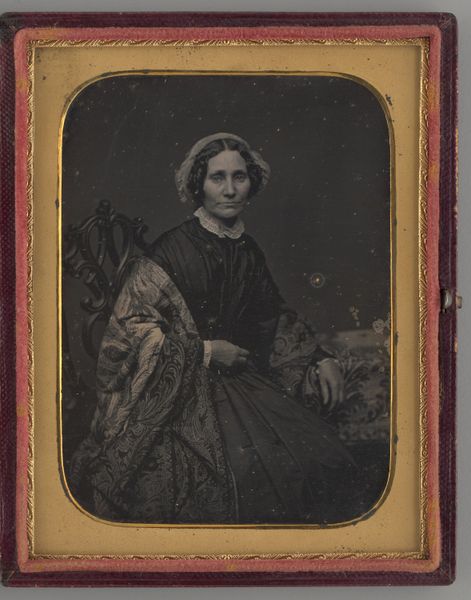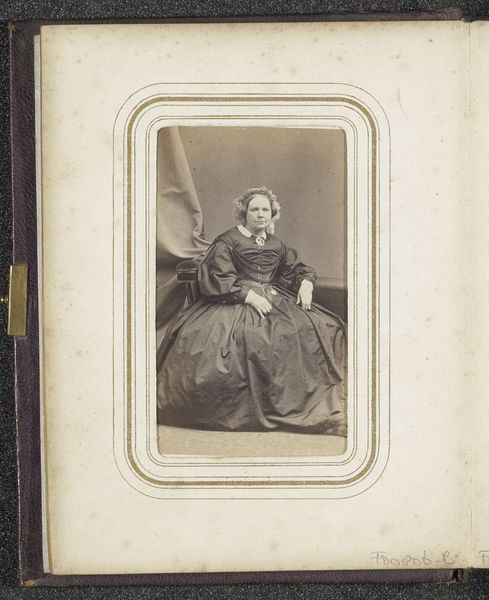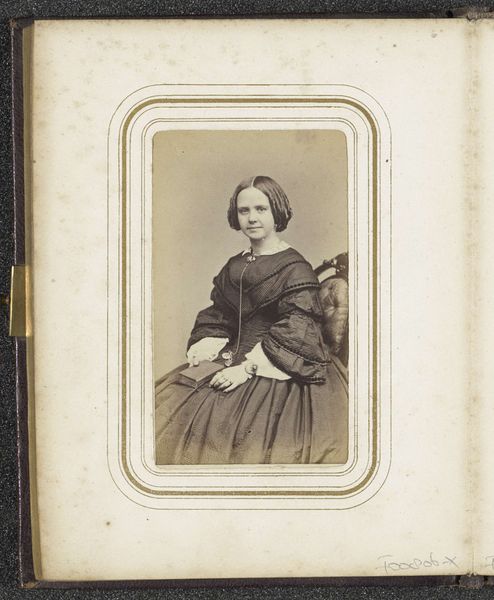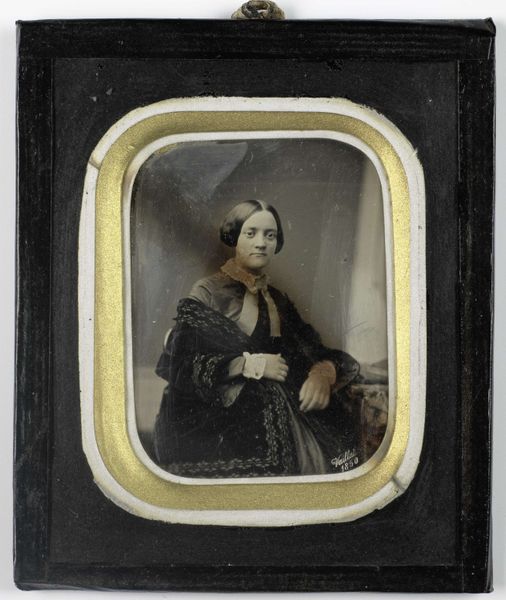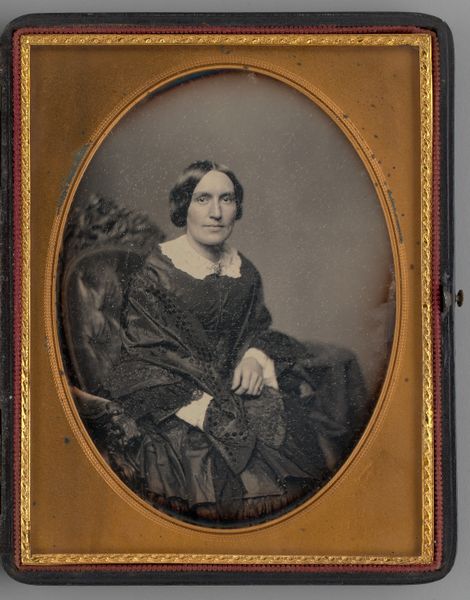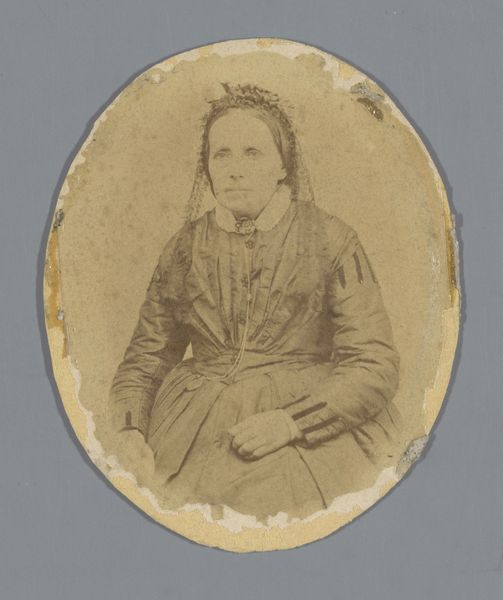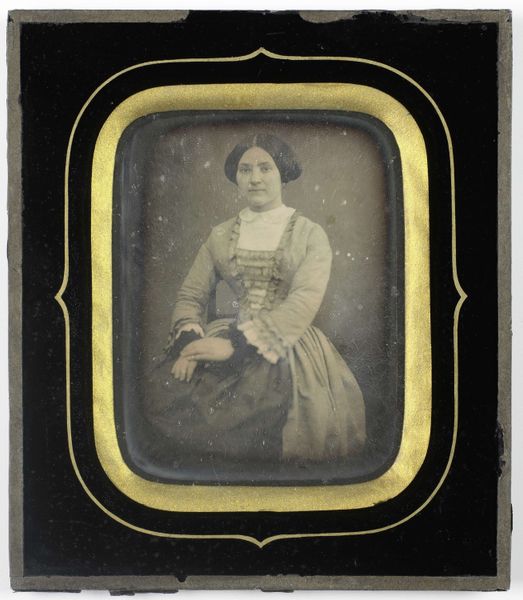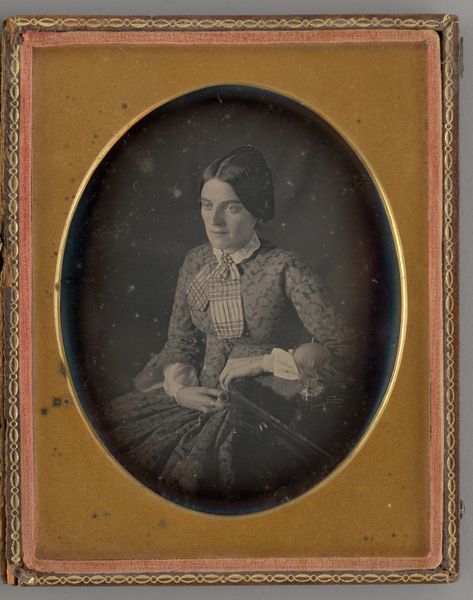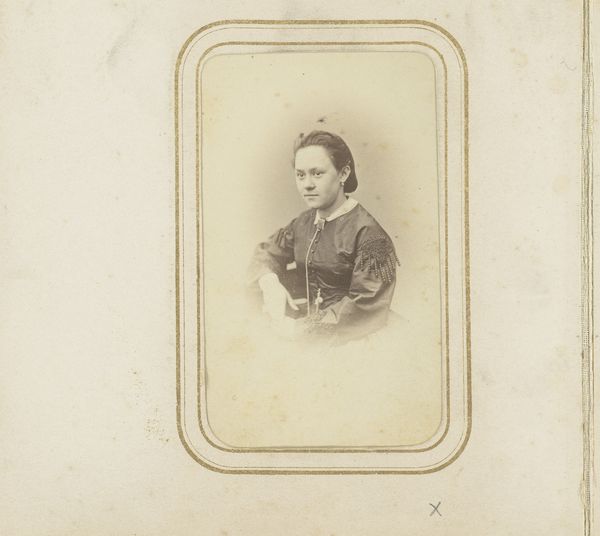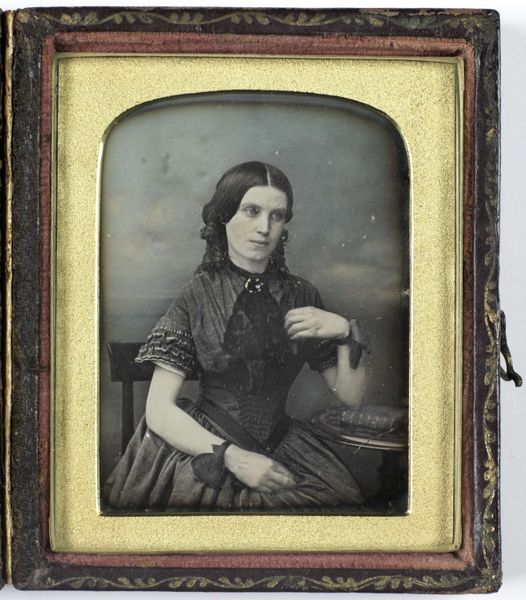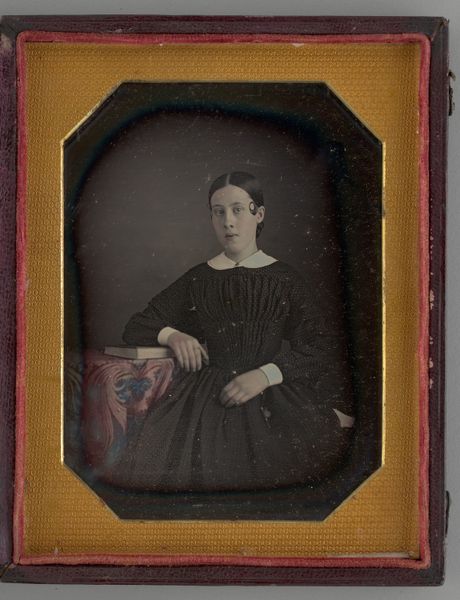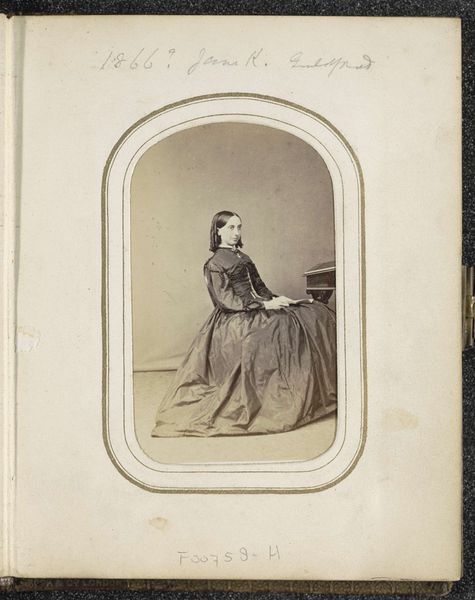
daguerreotype, photography
#
portrait
#
daguerreotype
#
photography
#
romanticism
Dimensions: height 64 mm, width 52 mm
Copyright: Rijks Museum: Open Domain
Curator: There’s something undeniably haunting about this small photograph. Editor: It definitely feels introspective. It’s… somber, maybe a touch melancholic? Like a still from a very quiet drama. Curator: This daguerreotype, an early photographic process, is titled "Portret van een onbekende jonge vrouw" and was captured sometime between 1841 and 1847 by Antoine François Jean Claudet. Editor: Unknnown indeed. And the very *style* of the time screams romanticism, right down to the affected pose and what looks like some fairly complex costuming or drapery. Curator: Absolutely. Daguerreotypes possess this incredible sense of immediacy and also, ironically, distance. The sharp details— the texture of the fabric, her hairstyle— bring her close, yet we’ll never know who she was. It hints at immortality while solidifying mortality. Editor: Those objects though... the chair she's sitting in and the hanging fabric? All of it is an established lexicon to hint at status, and, like a sort of pictorial code, they’d likely communicate an array of meanings that are utterly lost on today’s viewer. Curator: And think about the symbolic weight of having your image captured in those early days of photography. It must have been perceived as something close to magic. The subject must have approached it with the utmost reverence. Editor: I imagine posing for a daguerreotype involved real commitment! That stillness required probably invited rumination. I keep wanting to create a backstory for her, wondering what preoccupied her mind that day. Curator: Maybe it's best we don't know. Perhaps the true magic lies in allowing ourselves to feel that sense of loss and mystery. Editor: Perhaps so, artist to unknown model. Now, what story might *I* have captured in her face? That’s what resonates for me!
Comments
No comments
Be the first to comment and join the conversation on the ultimate creative platform.
